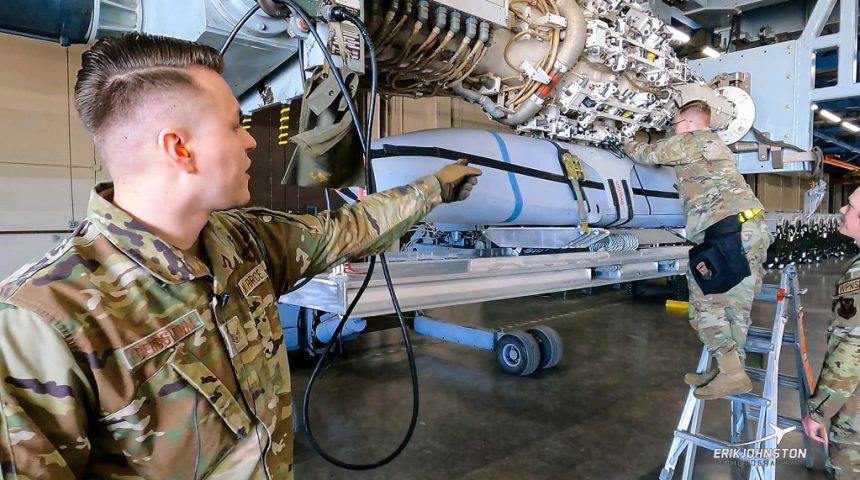The preloading of the weapons on the RLS is a careful and delicate, but it allows saving 19 hours of load time per plane.
Earlier this year we reported about the U.S. Air Force resurrecting the capability to pre-load munitions on the Launcher Load Frame (LLF) and then load it on the bomber. Now, our friend Erik Johnston worked with the 28th Munitions Squadron at Ellsworth Air Force Base, South Dakota, and realized a video of the loading process of the Rotary Launcher System that goes on the LLF.
The concept for pre-loading munitions has been around since the B-1 first entered service but has gone unused for 30 years until 7 AMXS at Dyess Air Force Base, Texas, resurrected the capability. Using LLF, weapons loaders can pre-load munitions on a RLS, under the cover of a facility, prior to transporting the entire launcher/munition package to the flight-line for loading on the aircraft.
The capability was thought for use with nuclear bombs, but the B-1 bomber’s mission was reviewed in 1994 and the type converted to conventional-only weapons with a physical conversion that took place between 2007 and 2011, with the Strategic Arms Reduction Treaty (START). Nevertheless, the LLF will now be used to generate conventional munitions packages out of the view of near-peer intelligence, surveillance and reconnaissance capabilities.
The LLF crew takes us through the various phases of the loading, starting with the inspection of the weapons. For this training event, the weapon used is a DATM-158 (Dummy Air Training Missile), the inert training variant of the AGM-158 Joint Air-to-Surface Missile (JASSM) cruise missile. The airmen check that every part of the missile is in working order, before preparing it to be lifted by the jammer that will move it in the correct position for the installation on the RLS.
After checking that the RLS’ BRU-56 30-inch ejector racks are fit to fly, the most delicate part of the process begins: the correct placement and alignment of the weapon under the RLS so it can be installed on the rack. Following the connection of the weapon to the BRU-56, the airmen run a series of checks to verify that everything has been done correctly, before moving to the loading of the other seven weapon that complete the RLS’ munition package.
You can find the video, the first of a series dedicated to the “BONE” (from “B-One”, as the aircraft is unofficially nicknamed), with the full detailed explanation of the procedure here below:









